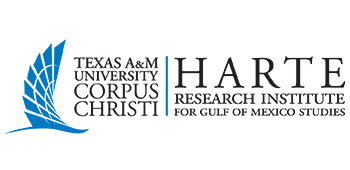Zooplankton have high temporal and spatial variability. Therefore, they need to be assessed before oil impact and regularly thereafter, to interpret what changes are causally related to oil spills. Both chronic and acute releases of PAHs have deleterious impacts on zooplankton growth rates, secondary production, consequent accumulation of biomass, and thus prey availability to higher trophic levels of fishes. Exposures for days, or weeks, to oil concentrations between 50-300 ug l-1 have sub-lethal impacts on laboratory populations of zooplankton (NRC, 1985), and PAHs are toxic to all life stages of marine fish (Logan, 2007).
Petrochemicals are particularly dangerous to eggs and larvae (Hjermann et al., 2007), with dispersants increasing the bioavailability of PAHs to fishes (Ramachandran et al., 2004). Nevertheless, after the IXTOC-1 spill in June 1979, the respective mean total zooplankton biomass a few years later during August 1980 and August 1981 had remained the same, or actually perhaps even increased, compared to a mean total biomass measured over a similar station grid in August 1978, before the oil spill (Guzman del Proo et al., 1986). However, the species composition and relative abundances of this zooplankton community of the Bay of Campeche did change.
There are two main questions to be addressed. What were the effects of hydrocarbons on pelagic and benthic communities, including planktonic and benthic algae, foraminifera and mollusks? Did BP hydrocarbons fuel a “Dirty Blizzard” by stimulating phytoplankton and zooplankton blooms, or was the observed pulse in accumulation rates due to other factors?
We are investigating the effect of hydrocarbons on key benthic ecosystems, delivered directly from the wellhead and via a “Dirty Blizzard” mechanism for the major sedimentation event during mid-2010. Projects take advantage of an extensive pre-spill dataset resulting from research on the ecology of natural and artificial reefs (Addis et al., 2008; Patterson et al., 2009; Patterson et al., 2010; Dance et al., 2011). Quarterly video samples, collected from 2004 to 2010 with remotely-operated vehicles (ROV) at 27 artificial reef sites off northwest Florida, provide baseline data on the spatial and temporal variability in reef fish community, size, and trophic structure. Similar samples were taken at 23 natural and 28 artificial reefs. Pre- versus post-spill diet and muscle stable isotope data also exist to examine shifts in trophic structure, as well as to discern whether oil carbon has been transferred to upper trophic levels.
Ongoing analysis of liver and bile samples provide baseline data to estimate level of exposure to PAHs experienced by fishes across the geographic range of sampling. We are sampling reef fish communities quarterly over the next three years with an ROV. Reef fishes also are being sampled and stomach contents fixed for diet analysis, muscle tissue sampled for stable isotope analysis, otoliths sampled for testing for growth effects, liver and bile sampled to test for exposure to PAHs, and liver and other tissues analyzed for potential pathogens affecting fish. Video samples are being analyzed to test for shifts in community structure over time, but also to examine recruitment dynamics of fishes observed at reef sites. Trawl data from the National Marine Fisheries Service’s Fall Groundfish and Summer SEAMAP stations across the northeastern GOM shelf also is being analyzed.
Task Partners







